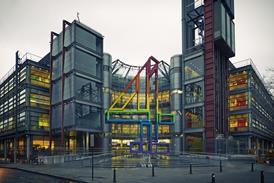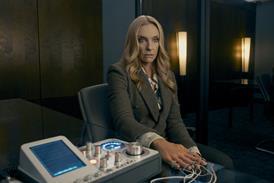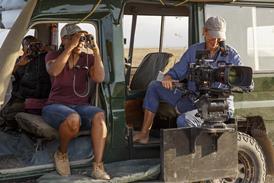Sending work offshore is about more than chasing the lowest price - you need to develop global expertise and build effective relationships with suppliers, writes Adrian Pennington.
It’s been almost three years since Indian media giant Prime Focus acquired Soho institution VTR Group amid widespread speculation that it would alter the UK facilities map. Fellow Indian group Century Communication subsequently snapped up post stalwart Molinare. Yet the anticipated outpouring of work from London to Mumbai has not occurred. This is partly due to the economic downturn, with Hollywood reining in its features, but also because sending work offshore wasn’t necessarily the intended business model.
“We are operating a post-production business not a shop front,” says Prime Focus group managing director Anshul Doshi, referring to the idea that Indian firms were buying up facilities abroad to route work back to India where it could be performed much more cost-effectively.
“It’s not about Indian post coming to Soho,” he insists. “The acquisition could have come from a foreign investor in the US, Middle East or Singapore. It was a business decision from a company growing in the media and entertainment space worldwide.”
Growing Focus
Started in a garage in 1997, Prime Focus has become one of the largest digital post and VFX companies in India. It began its international ambitions after spying an opportunity to acquire 20-year-old VTR and its five operating units, including Blue, the only one to retain its existing brand.
“What we’ve done is turn an ageing company into a young company by refocusing its direction,” says Doshi. Prime Focus also folded Clear Post into London operation Prime Focus London and grew its international reach by acquiring Canadian VFX outfit Frantic Films and LA house Post Logic.
“‘Outsourcing’ is a misnomer,” says Doshi. “We’re offering clients the flexibility over where to source creativity. For example, PFL has high-quality design and high aesthetics. Frantic Film has a huge R&D capability, and the Indian side offers breadth in being able to work on 300, 400 shots at one time. It’s the best of what each destination can offer, plus scale, which gives us a competitive edge.”
Traditional post and VFX facilities have been hampered in their evolution because they can’t break out of their core geography, he suggests. “None of our divisions has higher or lower value, but we can achieve efficiencies by trying to break down the job depending on the core skill set that fits the country or division.”
Where it would take three years for a UK company without links to India to establish an outsourcing relationship with Indian companies, “we have one ready to go”, claims Doshi, although 99% of Prime Focus’ work is retained locally.
This was put to the test on 2007 feature 28 Weeks Later for which some of the big 3D shots of London were executed jointly between the UK and India; and for Tails of the Riverbank, a children’s feature requiring 1,500 shots comprising composites of furry puppets shot on bluescreen, CG set extension and an intensive DI, coordinated by PFL and delivered by sister companies in Mumbai, Chennai, Hyderabad and Parel.
Overhauling Molinare
It’s been a similar story at Molinare, the 35-year-old grand dame of British post, which is currently undergoing a £5m overhaul funded by new owners Pixion, the post-production subsidiary of Century.
The restructure includes relocating the VFX boutique Pixon acquired, Men From Mars (previously 75% owned by Barcud Derwen), alongside Molinare to create “a large single shop for all a client’s post needs”, says MFM co-founder Phil Attfield.
Prior to its purchase by Pixion, MFM outsourced 150 of 1,450 shots on 2008 feature Mutant Chronicles to Chennai’s Prassad EFX.
“It’s been a two-way street for some time now,” Attfield explains. “We had all the assets for the scenes and retained creative control but sent both companies composites of what we wanted certain elements to looks like.”
However, there’s still some reticence among other London facilities about sending work to Asia despite potential cost savings of 40%-60%.
“I’d be worried about losing control over the product,” says Unit chief executive Adam Luckwell. “Even for 3D work, where it’s rare for a client to attend the sessions, outsourcing so far afield could impair our ability to fine tune things especially to deadline.”
It’s unlikely that fast-turnaround commercials or tight deadline broadcast jobs would be outsourced, even with the aid of super-fast broadband pipes. In feature film, where time scales are longer and shot volumes greater, ‘grunt’ work such as animation, rendering, match moving and rotoscoping is more likely to be fed overseas.
However, Carl Grinter, director of production and business development at Rushes, says: “We’ve conducted test sequences with Indian companies since they’ve been the most aggressive at marketing themselves for this type of work and we concluded that the results wouldn’t be acceptable to a Western audience. I’m not critical of the quality, it’s just that there’s a cultural difference between the creative sensibilities a Hollywood client might expect and what an Indian facility might deliver.”
Running The Mill
The Mill claims to have one of the world’s largest outsourcing models for advertising work, sharing work between its own offi ces in London, New York and Los Angeles using a high-bandwidth VPN (virtual private network). According to chief executive Robin Shenfi eld: “This method is extremely productive and allows all three offi ces to tap into specialised expertise from a particular office.”
Shenfield has explored third-party outsourcing options for secondary creative tasks such as tracking and rotoscoping, but while the lower cost base of some countries might appear attractive “the level of investment required to set up good systems and to ensure reliable and consistent quality is a big deterrent”, he says.
“My sense is that some companies market the ability to outsource as a way of attracting business but in practice, I’m unconvinced it is delivering the level of benefi t you’d expect.” Even Anshul Doshi admits that for breakneck time frames and certain creative fi nishes, outsourcing is not the best option.
However, it would be wrong to lump all Indian facilities together. Attfield says: “There are some - and Pixion would be one - that have the talent and management to execute first-class briefs. Others need to be monitored extremely closely. On balance, the effort may not be worthwhile.”
The Moving Picture Company (MPC) has outsourced regular feature and commercials work over the past year to Bangalore’s Paprikaas, a subsidiary of MPC parent Thomson (through its Technicolor division). “The reality is that outsourcing works,” says MPC managing director Mark Benson. “There’s no question there’s a value to helping us work more effi ciently and deliver on tighter budgets than ever.”
What’s more, doing so releases capacity across MPC’s London, Vancouver and LA wings. Nonetheless, Benson also only outsources the “building blocks” such as rotoscoping, retaining all creative elements within its Western facilities. “It’s a fantastic way of working and we have a good understanding between our artists and our colleagues in India or Beijing (another Technicolor subsidiary) but if we ever felt that the work we outsource would compromise our creativity, we would walk away.”
CO-PROS INTERNATIONAL COOPERATION
In the wake of the global success of Slumdog Millionaire and with the UK/India co-production treaty in place, 18 UK feature film companies visited Mumbai earlier this year as a part of a UK Film Council delegation to meet their Indian counterparts. This followed a 2007 government-backed fact-finding mission to the region attended by Evolutions, Ascent Media and AKA Design among others.
“The number of co-productions shot in India, or Bollywood features using the UK as a location has increased tremendously even without Slumdog’s success,” says Isabel Davis, UK Film Council’s senior executive international for strategy and co-production. For example, forthcoming release London Dreams was shot in India and London and has been partly posted at Men From Mars, including 3D composites of crowds at Wembley Stadium.
India’s domestic entertainment industry grew at a staggering 39% over the past three years, reports New Delhi industry body Assocham, surpassing the 17% average growth rate for the services sector and bucking the global economic downturn.
International brands are looking to air higher-quality commercials, which could be a lucrative avenue for UK facilities. “We’ve noted a lot of interest from production companies looking to finish commercials intended for broadcast in India,” says Grinter.

























No comments yet